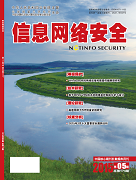With the development of Web 2.0 and the gradual maturity of online social media, social network has become an indispensable platform for people’s social interaction, information sharing and news transmission. Being different with traditional diffusion ways, information is propagating fast on a large scale through users’ communication behavior, which promotes business such as marketing and information industry to some extent. Meanwhile, nevertheless, it increases the burst opportunity and frequency that destructive events, malicious information, negative news happens. The problems caused by these phenomena give rise to new challenge to internet security. Therefore, while people devote themselves to fully explore and use online information resource and obtain its service, in order to prevent security issues during information diffusion from jeopardizing nation and public interests, this paper concentrate upon doing research about the problem of information diffusion prediction in social network. Under the way of predicting information propagation, can potential threats hide in information be found at an early stage, thus our national information industry will stand a far better chance of growing. To be specific, this paper briefly introduces the mechanism of information propagation, analyzes and concludes three influence factors (user, information content and relationship between users) and main diffusion characteristics, then summarizes the diffusion prediction models and methods from four aspects, namely, infection-based, diffusion characteristics-based, statistic and inference-based and influence-based models. Finally, the directions for the future research are discussed.

